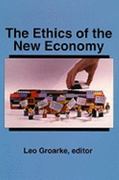Question
FINANCIAL DECISION MAKING This scenario contains 5 short questions each worth 2 marks (a total of 10 marks) Maple Machinery (MM), a business based on
FINANCIAL DECISION MAKING
This scenario contains 5 short questions each worth 2 marks (a total of 10 marks)
Maple Machinery (MM), a business based on the outskirts of Toronto, whose home currency is the Canadian Dollar (C$), trades regularly with customers and suppliers in a number of different countries and currencies. Among many other transactions, MM expects to receive C$ 275,000 from a US customer in one months' time and to pay 500,000 to a Spanish supplier in three months' time.
Current exchange rates between the C$ and the are as follows:
Spot exchange rate: C$1 = 0.7655 - 0.7699
3-month forward exchange rate: C$ 1 = 0.6987 - 0.7010
Annual interest rates in Canada and Spain for the next year are expected to be as follows:
Canada 1.7% - 2.0%
Spain 0.4% - 0.6%
In addition to the use of money market products and derivatives to hedge any foreign exchange risk exposure, the CFO of MM is considering 'internal' methods such as invoicing all customers in C$, insisting that suppliers invoice MM in C$ and 'leading' or 'lagging' payments.
Required:
1) What type of foreign exchange risk exposure is MM exposed to in relation to the receipt in one months' time from a US customer?
A. Transaction risk
B. Translation risk
C. No risk
2) What is the gain or loss in C$ compared to its current C$ value which MM will incur by taking out a forward exchange contract for the future payment to the Spanish supplier? Show all workings.
3) What is the payment in C$ if MM uses a money market hedge to hedge the payment to the Spanish supplier in three months' time? Show all workings.
4) With reference to MM making foreign currency purchases, if the C$ is expected to weaken against the should MM 'lead' or 'lag' in its management of the anticipated payment? Explain your answer
5) If MM decided to invoice all its customers in C$, which of the following statements is/are false?
A. Invoicing customers in C$ will eliminate all foreign exchange risk that MM is exposed to
B. Invoicing customers in C$ will pass translation risk to the customer
C. Insisting on being invoiced in C$ is a cost-free way of reducing risk exposure related to foreign suppliers
Step by Step Solution
There are 3 Steps involved in it
Step: 1

Get Instant Access to Expert-Tailored Solutions
See step-by-step solutions with expert insights and AI powered tools for academic success
Step: 2

Step: 3

Ace Your Homework with AI
Get the answers you need in no time with our AI-driven, step-by-step assistance
Get Started


